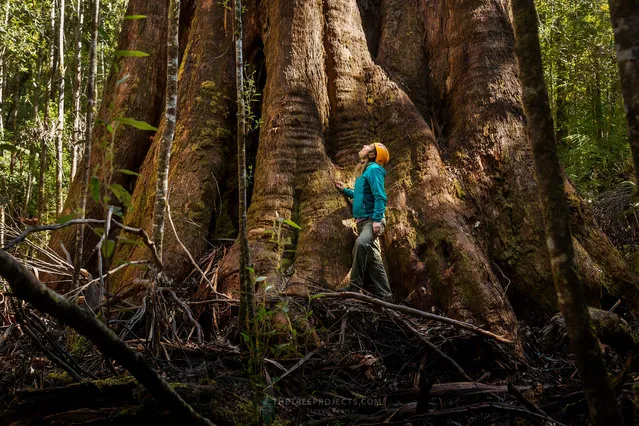
The Tree Projects team spent 67 days documenting one eucalyptus regnans in the Styx valley of Tasmania. Using a combination of tree-climbing and elaborate arboreal rigging techniques, they produced an intimate portrait from an impossible perspective of one of the world’s largest individual flowering trees, which goes by several common names. These photos document the process that resulted in an extraordinary ultra high-definition photograph. Here: Team member Jen Sanger stands beside a typical bell bottom. From the forest floor, the trees can rise more than 90 metres. The density of the lower forest canopy means it is impossible to see the entire tree. (Photo by Steven Pearce/The Tree Projects/The Guardian)
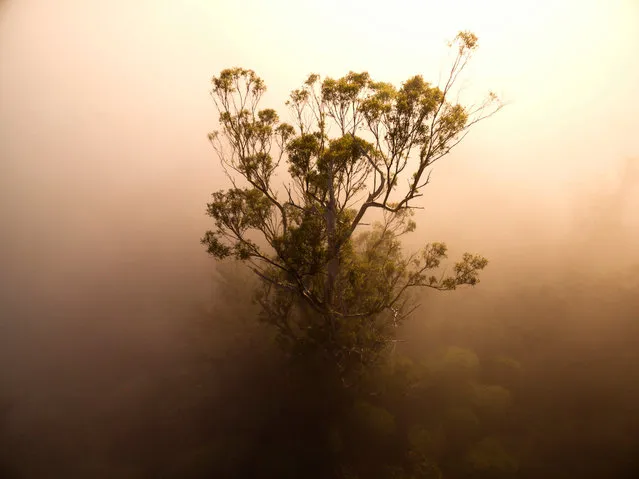
The crown of a eucalyptus regnans pokes through the mist in the Styx valley. “Tasmania has four of the top 10 tallest tree species in the world and is home to the tallest flowering plant in the world at 99.8m”, says Steven Pearce from the Tree Projects. “Wrest Point casino, Hobart’s tallest building, is only 73m high”. (Photo by Steven Pearce/The Tree Projects/The Guardian)
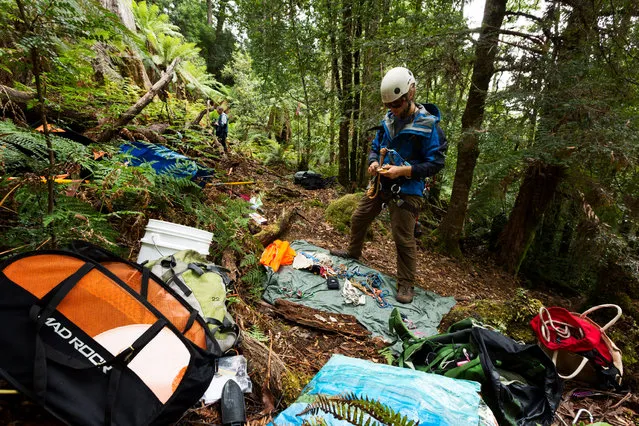
The team spent 67 days documenting just one tree in the Styx Valley. They used special camera rigs that travelled the height of the tree in the free space between them to create an 87-image composite. Team member Dan Haley prepares his equipment before beginning a climb. (Photo by Steven Pearce/The Tree Projects/The Guardian)
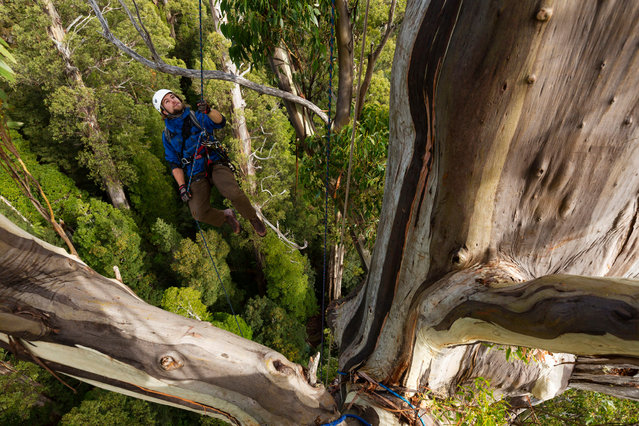
Haley nears the top of the tree. (Photo by Steven Pearce/The Tree Projects/The Guardian)
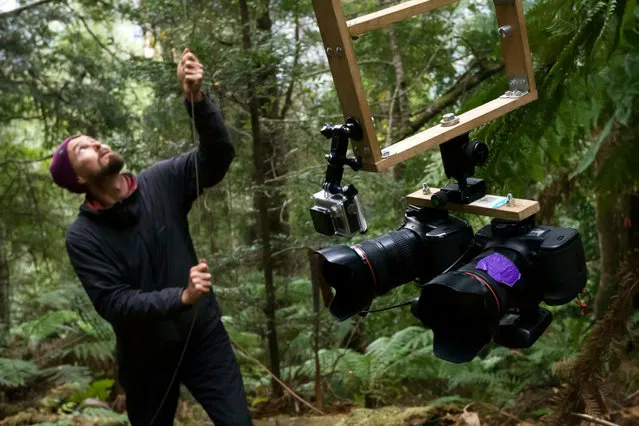
Photographer Steven Pearce checks and prepares to send his camera suspension system, affectionately known as MOE (margin of error), into the treetops. It was built from specialist climbing gear and items available from a hardware store. The main suspension rope was over 300m long and weighed 40kg. (Photo by Steven Pearce/The Tree Projects/The Guardian)
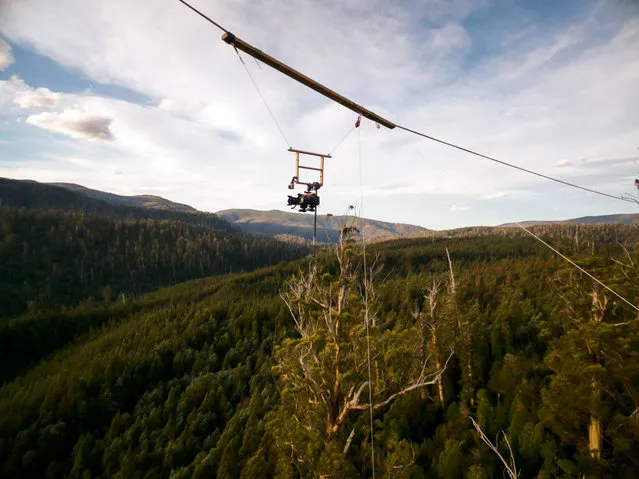
The suspension system in action. Wild weather made the process even more difficult. Pearce says he had to wait 11 days to get the final few images, meeting “the mental challenge of being patient and believing it would happen”. (Photo by Steven Pearce/The Tree Projects/The Guardian)
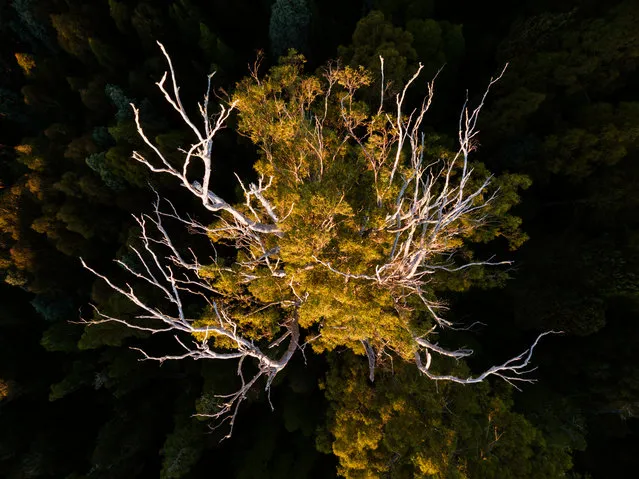
View from the top of one of the older eucalyptus regnans in the Styx valley, showing the dieback that is a part of their natural ageing process. Pearce would sometimes spend the whole day in the tree canopy. He says being up there was like being in another world. “You can also really understand that the tree is a living thing and spending time up there you really do feel a presence of the individual tree”. (Photo by Steven Pearce/The Tree Projects/The Guardian)
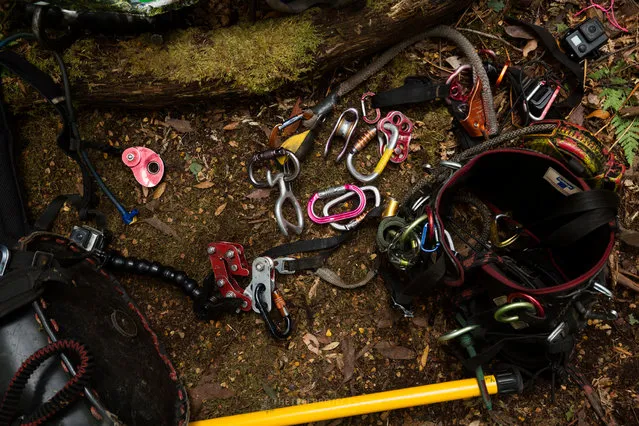
Some of the climbing gear used to install and operate the camera suspension system. Along with camera equipment and personal climbing gear, more than 100kg of equipment had to be carried into the tree site. (Photo by Steven Pearce/The Tree Projects/The Guardian)
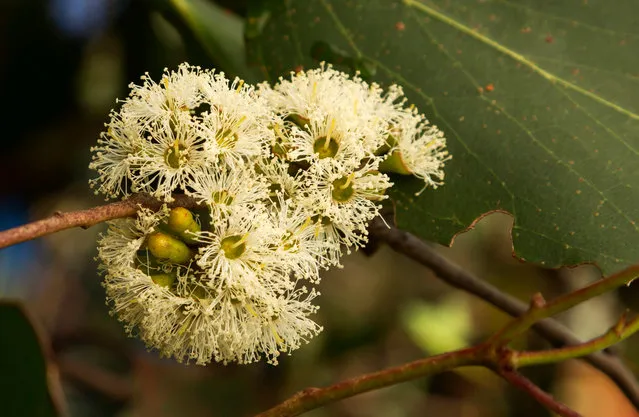
The flower of a eucalyptus regnans. The Styx valley contains some of the tallest flowering plants in the world. (Photo by Steven Pearce/The Tree Projects/The Guardian)
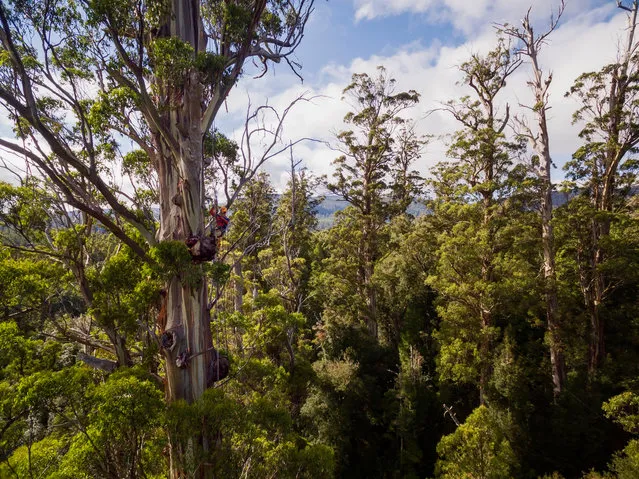
Team member and athropod researcher Yoav Daniel Bar-Ness takes a moment in the Styx valley. Pearce says the team went to such lengths to complete the project because they wanted to allow everyone to experience the majesty of the trees. (Photo by Steven Pearce/The Tree Projects/The Guardian)
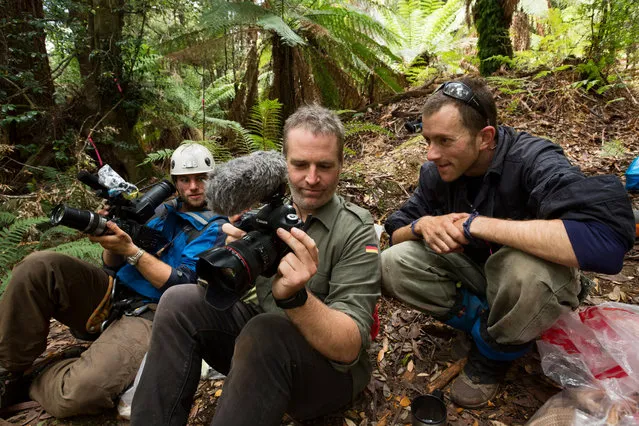
Pearce and the team review their work. (Photo by Steven Pearce/The Tree Projects/The Guardian)
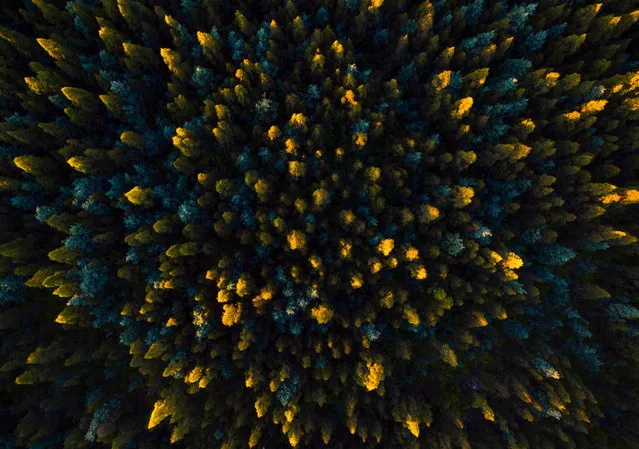
A view from above shows eucalyptus regnans outstripping the competition as the forest regenerates. (Photo by Steven Pearce/The Tree Projects/The Guardian)
01 Feb 2017 06:37:00,
post received
0 comments
